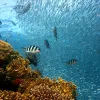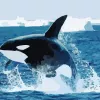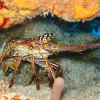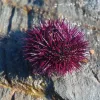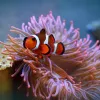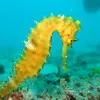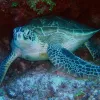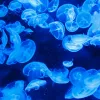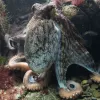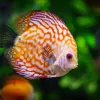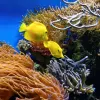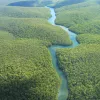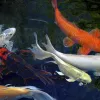Important update from TheSchoolRun
For the past 13 years, TheSchoolRun has been run by a small team of mums working from home, dedicated to providing quality educational resources to primary school parents. Unfortunately, rising supplier costs and falling revenue have made it impossible for us to continue operating, and we’ve had to make the difficult decision to close. The good news: We’ve arranged for another educational provider to take over many of our resources. These will be hosted on a new portal, where the content will be updated and expanded to support your child’s learning.
What this means for subscribers:
- Your subscription is still active, and for now, you can keep using the website as normal — just log in with your usual details to access all our articles and resources*.
- In a few months, all resources will move to the new portal. You’ll continue to have access there until your subscription ends. We’ll send you full details nearer the time.
- As a thank you for your support, we’ll also be sending you 16 primary school eBooks (worth £108.84) to download and keep.
A few changes to be aware of:
- The Learning Journey weekly email has ended, but your child’s plan will still be updated on your dashboard each Monday. Just log in to see the recommended worksheets.
- The 11+ weekly emails have now ended. We sent you all the remaining emails in the series at the end of March — please check your inbox (and spam folder) if you haven’t seen them. You can also follow the full programme here: 11+ Learning Journey.
If you have any questions, please contact us at [email protected]. Thank you for being part of our journey it’s been a privilege to support your family’s learning.
*If you need to reset your password, it will still work as usual. Please check your spam folder if the reset email doesn’t appear in your inbox.
Marine habitats
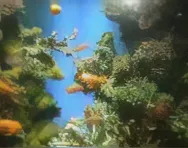
What are marine habitats?
‘Marine’ is a word that describes oceans and seas, where water is salty. Over 70% of the Earth’s surface is covered water, and nearly all of that is saltwater from oceans and seas.
Marine habitats can be very different from each other depending on how warm the water is. Warm, tropical water has coral reefs full of tiny, colourful fish, while chilly waters in the polar regions have fewer species that have adapted to water that can be colder than the temperature that water normally freezes at (0°C)!
Top 10 facts
- Marine habitats include oceans and seas, which both have saltwater.
- Marine creatures also live in estuaries – where rivers and oceans meet and the water is still salty.
- Saltwater is water that has 35g of salt for every kilogram of water. It’s not something we humans can drink as it will just make us more thirsty!
- Oceans and seas cover over 70% of the Earth’s surface.
- There are five oceans across the planet, and over 100 different seas.
- Having salt in the water means that it takes a lower temperature for the water to freeze (it normally freezes at 0°C). So, some marine animals have adapted to living in waters that are below 0°C, especially around polar regions.
- Waters around the polar regions have fewer species of fish than waters in the tropics (near the equator) and temperate zones.
- About three-fifths of all the fish species that we know about live in marine habitats.
- About one-third of marine species live in coral reefs, which are located in the tropics, on the eastern side of continents and around islands.
- Some marine life can be found in very deep places in the ocean – this can be over 5 kilometres down from the surface.


Boost Your Child's Maths & English Skills!
- Start your child on a tailored learning programme
- Weekly resources delivered to your dashboard
- Keep your child's learning on track
Did you know?
- Over 70% of the Earth’s surface is covered by water, and most of that includes marine habitats.
- Marine habitats have water that contains a lot of salt – we call it saltwater. Oceans, seas and estuaries (where rivers and oceans meet) all have saltwater.
- Temperatures in marine habitats are different depending on where in the world they are. Water can be below 0°C (its normal freezing point) around polar regions, but up to 30°C in the tropics.
- The different water temperatures mean that fish and plants have had to adjust to living in those different conditions. If you suddenly moved them from cold polar water to warm tropical water, they wouldn’t be happy.
- The five oceans on the Earth are:
- Arctic Ocean
- Atlantic Ocean
- Pacific Ocean
- Indian Ocean
- Southern Ocean (around Antarctica)
- Creatures who live in marine habitats can breathe underwater (for example, using gills) or can hold their breath for a long time and just come up to the surface every now and then for air.
- Most marine life depends on plankton, which are tiny organisms that are all over the ocean and provide perfect meals for larger fish.
- Some of the strangest looking fish are those that live in the very deepest parts of the ocean, where the ocean has dips like valleys. These can be more than 5 kilometres below the surface, and the fish have adapted to be able to stand all that water pressure above them as well as living in darkness.
- There are sea grasses and plants, and even different creatures that live on the ocean floors rather than swimming around closer to the surface.
Marine gallery
- Underwater life
- Orca
- Lobster
- Sea urchin
- Sea anemone
- Seahorse
- Green turtle
- Jellyfish
- Octopus
- A discus fish
- Coral reef
Gallery
About
The saltwater in marine habitats has 35g of salt for every kilogram of water. It’s a lot more salt than is healthy for us to have in our drinking water, which is why we can’t drink water from the ocean.
There are just five oceans in the world, but over 100 seas. This is because a sea is a body of water that is closed off a bit by land, but usually connected with oceans. Seas include anything with the name ‘bay’ or ‘gulf’ too.
Marine creatures in polar waters include:
- Beluga whale
- Cod
- Ice fish
- Krill (food for larger creatures)
- Orca
- Sperm whale
Marine creates in temperate waters include:
- Abalone
- Crab
- Haddock
- Halibut
- Lobster
- Monkfish
- Mussels
- Right whale
- Salmon
- Sea urchin
- Swordfish
- Shrimp
Marine creatures in tropical waters include:
- Anemone
- Barracuda
- Bottlenose dolphin
- Clownfish
- Green turtle
- Grouper
- Octopus
- Parrotfish
- Sea cucumber
- Seahorse
- Shark
- Stingray
Marine creatures that live in very deep parts of the sea include:
- Football fish
- Lantern fish
- Stoplight loosejaw
- Viper fish
Related Videos
Just for fun...
- Play lots of marine biology games and find out more about the ocean's depths
- Marine habitat colouring sheets and activities
- Complete some marine habitat wordsearches
- Test your knowledge of marine biology in a CBBC quiz
- Design a fish with the right adaptations to survive and thrive
- Find ocean games, sea stories and underwater fact files on the WWF's site
- Show off your knowledge with a BBC quiz about ocean life
Children's books about marine habitats
Find out more about marine habitats:
- Look through WWF Ocean Fact Files
- Watch BBC Bitesize videos about ocean habitats
- The DK FindOut! guide to oceans and seas
- See a cross-section of the coral reef
- Saltwater habitats
- Discover the secrets of seagrass meadows and why they're so important
- Explore ocean life by watching a BBC Teach video about rockpooling on the east coast of Scotland
- Underwater facts for kids: oceans
- Read National Geographic Kids fact files about marine creatures: great white sharks, dolphins, turtles and blue whales
- Follow a migration route map and understand how animals move around our planet
- Watch a coral reef at night
- Understand more about how we can care for the ocean
- Digital Ocean School from Surfers Against Sewage offers lessons and resources about all aspects of marine life
See for yourself
Look through sea images galleries to see a coral reef, the deep sea and unusual fishes
Watch video footage of the Great Barrier Reef in Australia
